Charts of the Week
Current economic trends from 4 to 8 April 2022: trade in goods, electricity consumption, traffic of electronically tolled vehicles, registered unemployment and other charts
Given the ongoing supply chain disruptions, trade in goods fell slightly in current terms in the first two months of the year, while year-on-year growth was still high. Companies’ export expectations fell to their lowest level since mid-2020 in March amid deteriorating geopolitical situation, pointing to a slowdown in goods trade in the months ahead. Electricity consumption in March was similar to the same period last year, while freight traffic on Slovenian motorways was higher. Registered unemployment remains extremely low. According to the original data, a total of 60,534 people were unemployed at the end of March, which is 26.7% fewer than a year ago, and long-term unemployment continues to fall. According to data on fiscal verification of invoices, total turnover between 20 March and 2 April was significantly higher in nominal terms year-on-year, with high growth especially in tourism-related services that were almost completely shut down in this period last year.
Trade in goods, February 2022
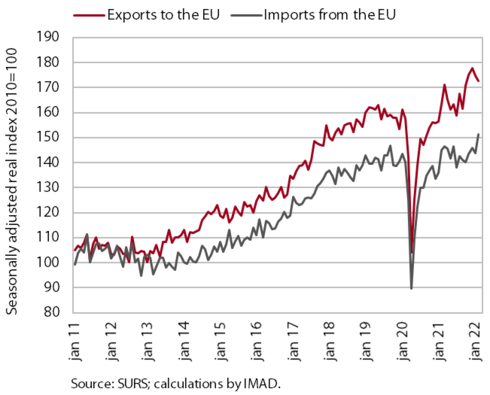
Trade in goods declined slightly in the first two months of 2022. The decline in real exports, especially to EU Member States (seasonally adjusted), was largely influenced by ongoing supply chain disruptions and heightened uncertainty among our major trading partners, due in particular to rising inflation. Imports, especially from EU Member States, were higher than in previous months, which we believe could also be related to the search for alternative sources of supply for products within the EU and thus the shortening of supply chains. Year-on-year growth in trade with EU Member States remained high in the first two months, significantly exceeding the level of the same period in 2020. Due to the war in Ukraine, export expectations fell in March to their lowest level since mid-2020, while export orders remained relatively high.
Electricity consumption, March 2022
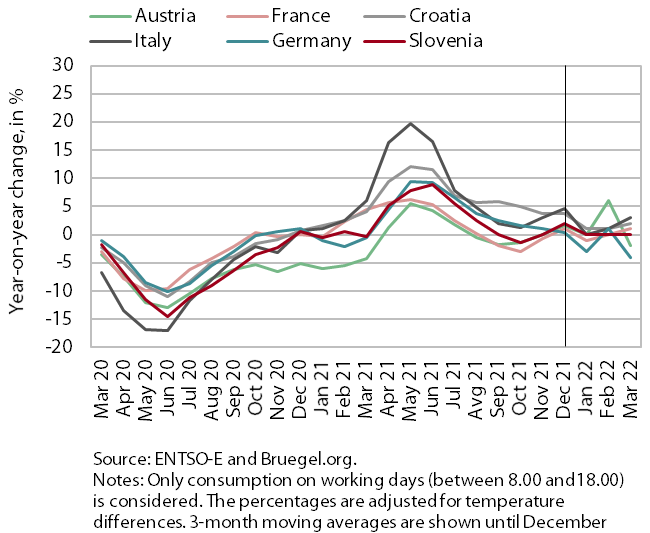
Electricity consumption in March was about the same as in the same period of 2021, but 4% lower than in March 2019. The gap with the same period before the epidemic was most likely due to the industrial electricity consumption as a result of supply chain disruptions and material shortages. Among Slovenia’s main trading partners, consumption was higher year-on-year in France (1%), Italy (3%) and Croatia (2%), while it was lower in Austria (-2%) and Germany (-4%). In addition to supply problems, the lower year-on-year consumption in Austria and Germany could also be a result of staff absences because of COVID-19 infections, the number of which in March was the highest since the beginning of the epidemic. Compared to March 2019, consumption was lower in Austria (-8%), Germany (-4%) and Italy (-1%), while it was higher in Croatia (6%). Consumption in France was about the same as in March 2019.
Traffic of electronically tolled vehicles on Slovenian motorways, March 2022
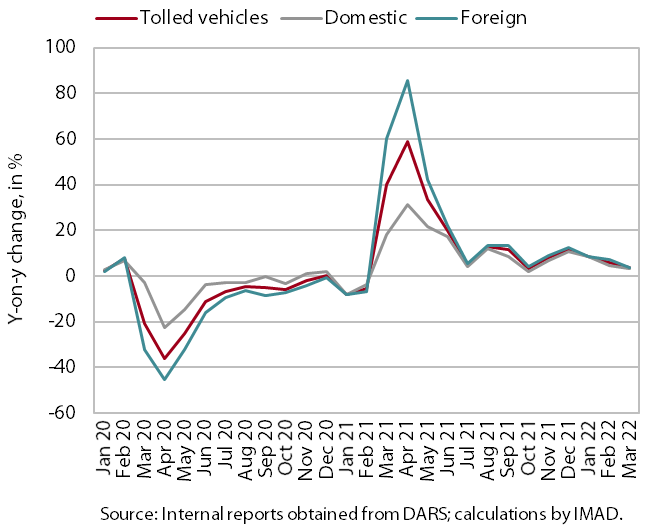
In March, the volume of freight traffic on Slovenian motorways increased by 4% year-on-year. Compared to the same month last year, which had the same number of working days, the increase was significant, but the trend is no longer closely linked to the impact of the epidemic. Compared to the same period of 2019, freight traffic volumes were 5% higher in March (adjusted for working days). The share of foreign vehicle traffic, which changes slightly over the months, was over 60% in March, close to the usual March averages (in the first year of the epidemic, it was much lower in March, at 52%). In March, which is one of the busiest months, traffic was more than a quarter higher than in January.
Registered unemployment, March 2022
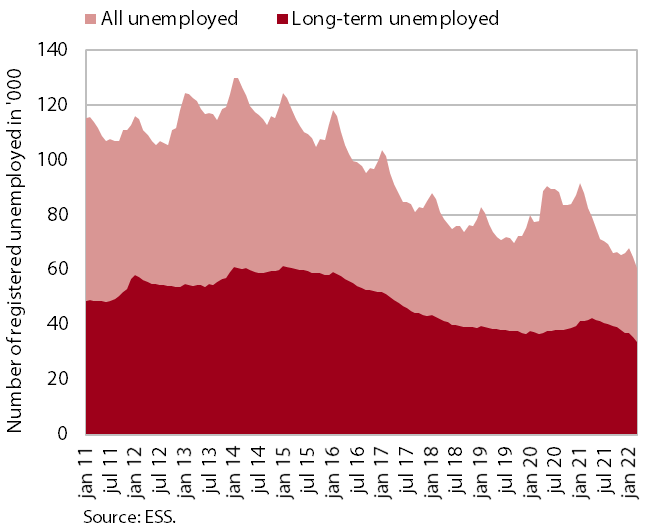
Given the low unemployment rate, the decline in the number of registered unemployed in March was somewhat smaller than in previous months (-2%), according to seasonally adjusted data. According to original data, 60,534 people were unemployed at the end of March, 6.6% fewer than at the end of February and 26.7% fewer than a year earlier. The number of unemployed was also significantly lower (by 22.2%) than at the end of March 2020. Among the unemployed, the number of long-term unemployed increased in the first four months of last year but then decreased again by the end of the year, given the high demand for labour, which is also reflected in the high rate of job vacancies. The number of long-term unemployed, more than half of whom have been unemployed for more than two years, continued to fall in the first three months of 2022 – in March, their number fell by 19.2% compared to March 2021 and by 7.9% compared to the same period at the beginning of the epidemic.
Turnover based on fiscal verification of invoices, 20 March–2 April 2022
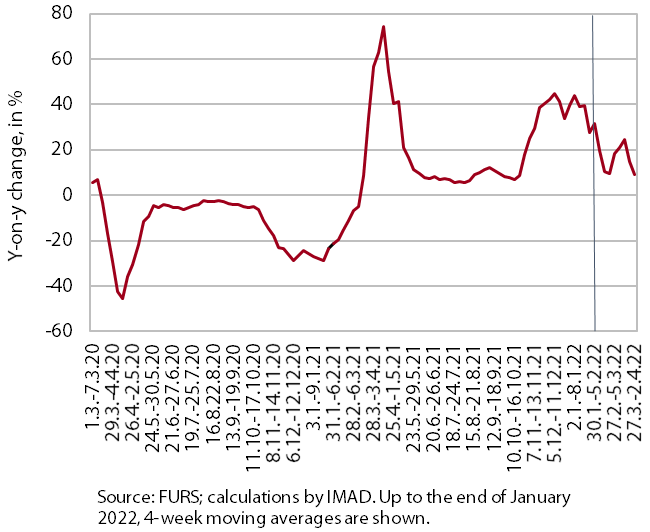
According to data on the fiscal verification of invoices, total turnover between 20 March and 2 April was 12% higher year-on-year in nominal terms and 17% higher than in the same period of 2019. Compared to the same period of 2020, when activity of certain sectors was restricted due to the epidemic, turnover was 120% higher. Year-on-year growth almost halved compared to the previous two weeks due to lower growth of turnover in trade. It was lower especially in retail trade of automotive fuels and food, where turnover had risen sharply in the previous 14-day period due to expected price increases and fear from possible shortages of goods after the outbreak of war in Ukraine. Year-on-year growth was still high for activities that were almost completely shut down in the same period of 2021 (especially tourism-related services).
